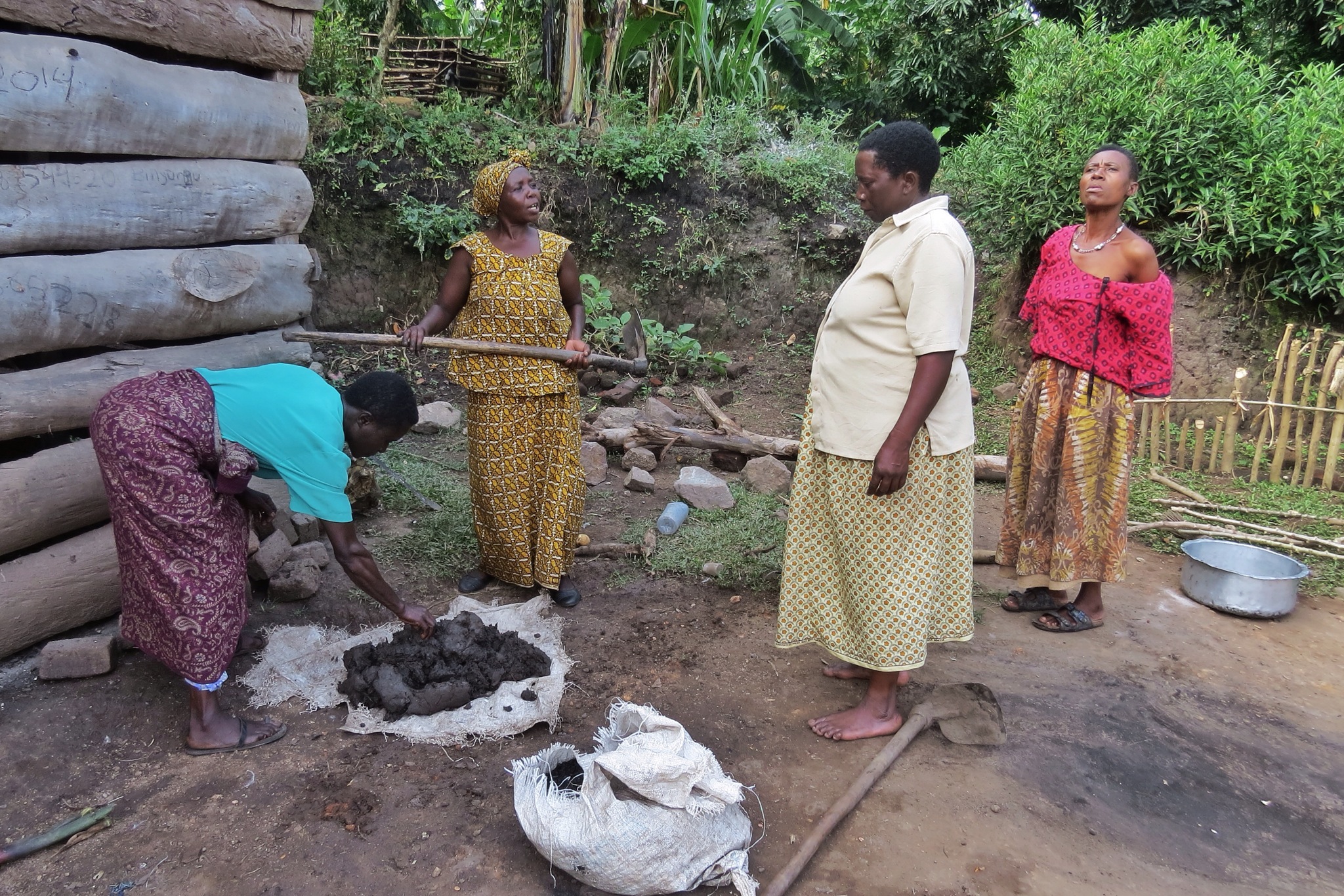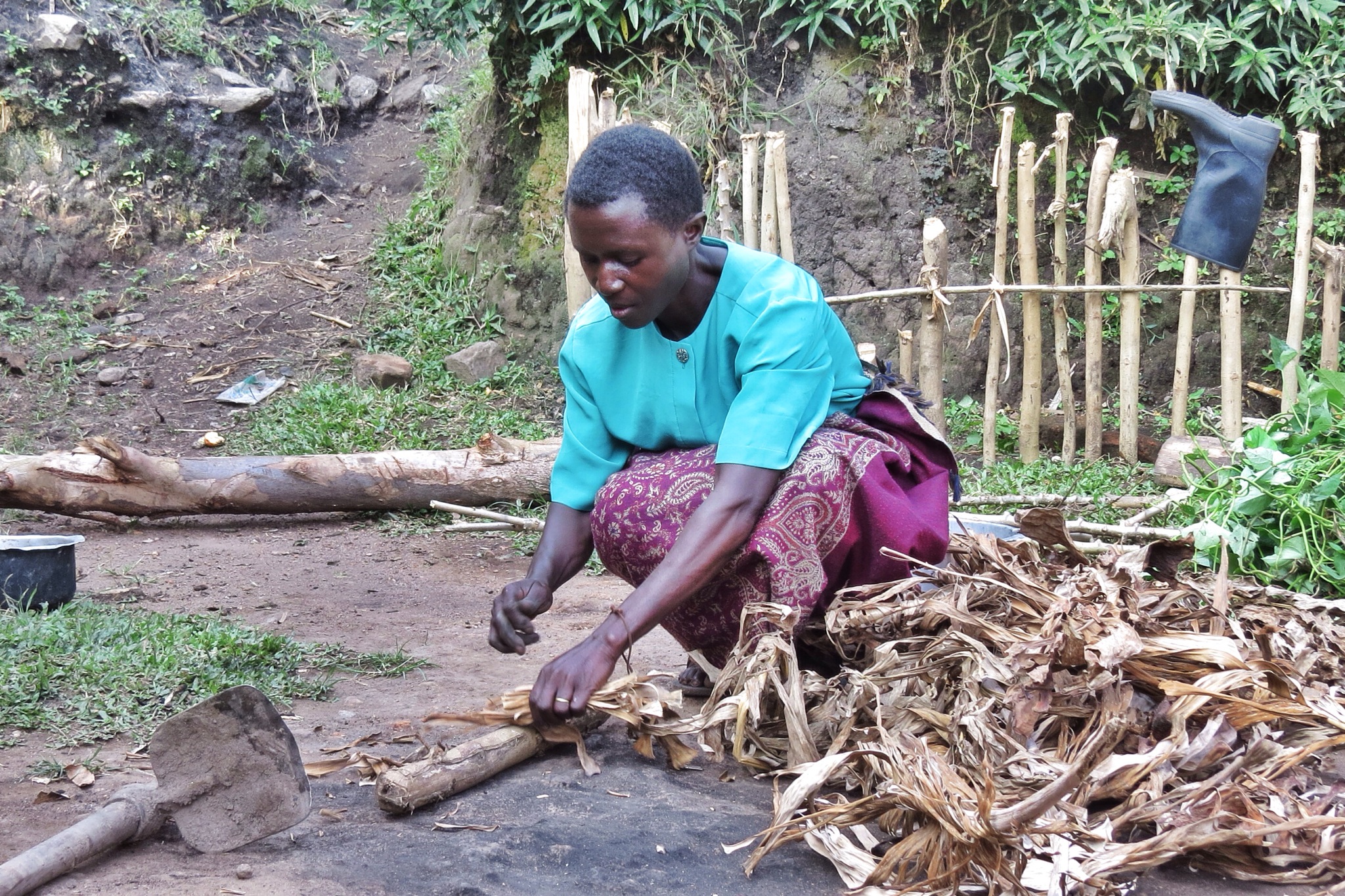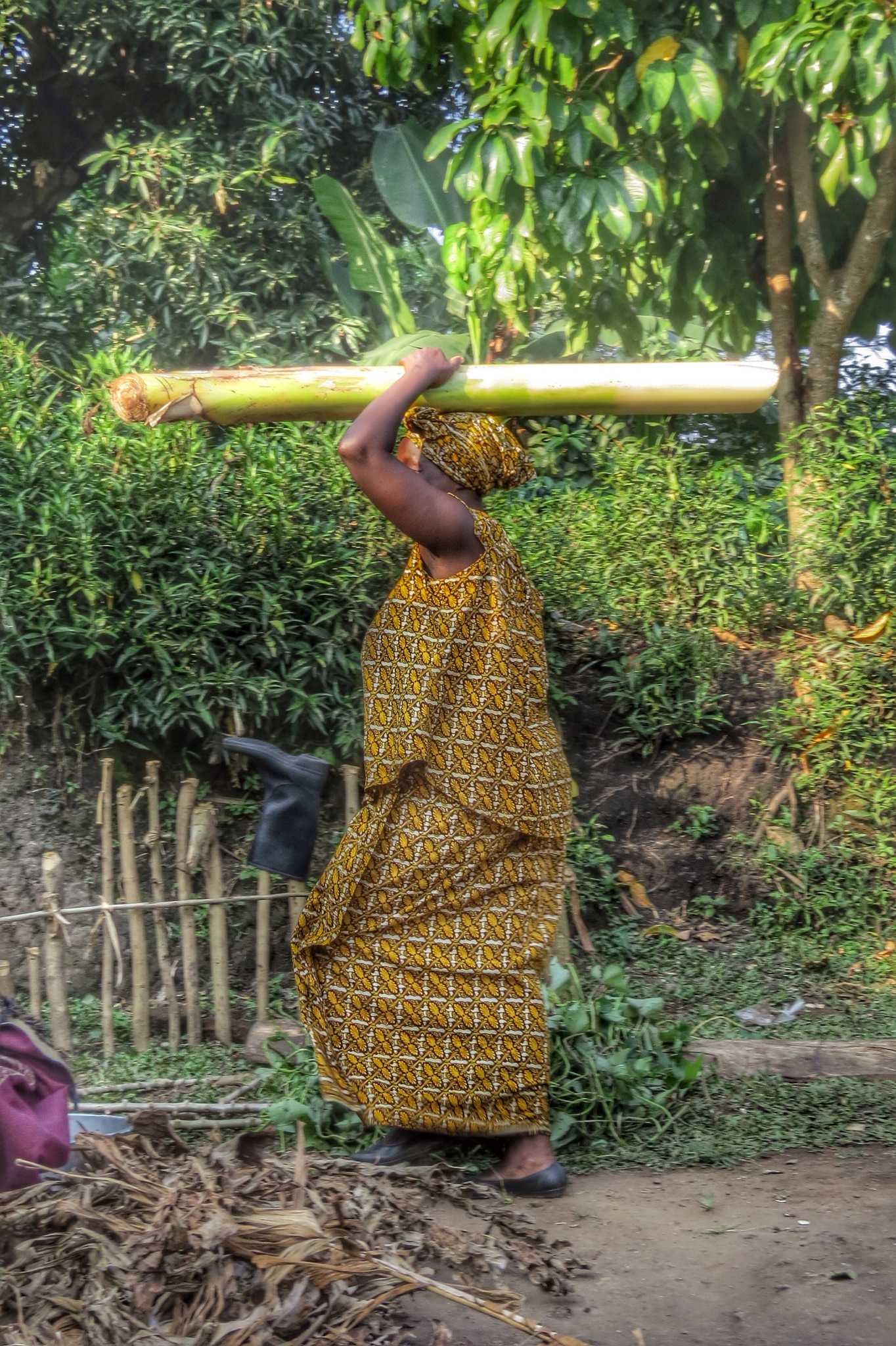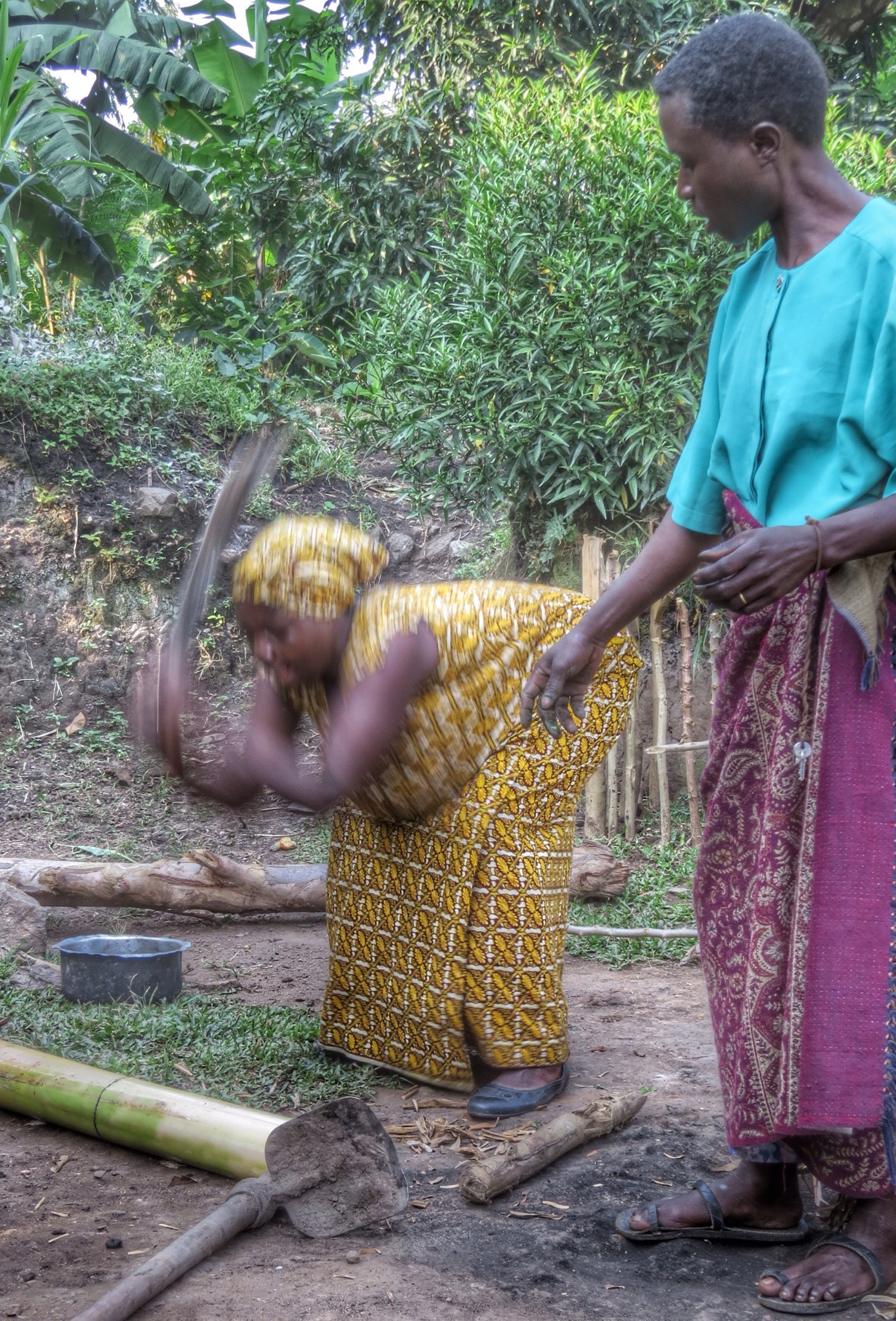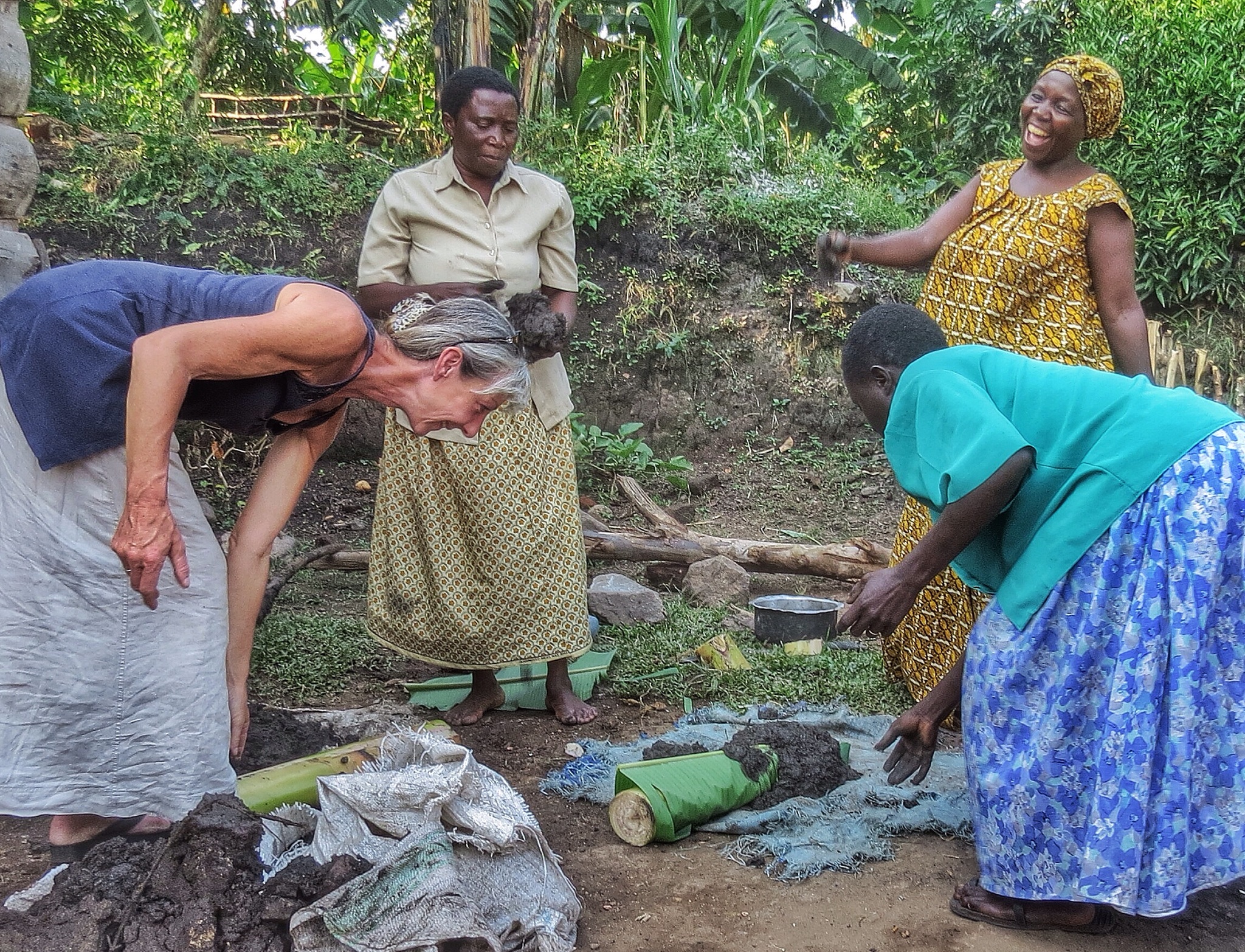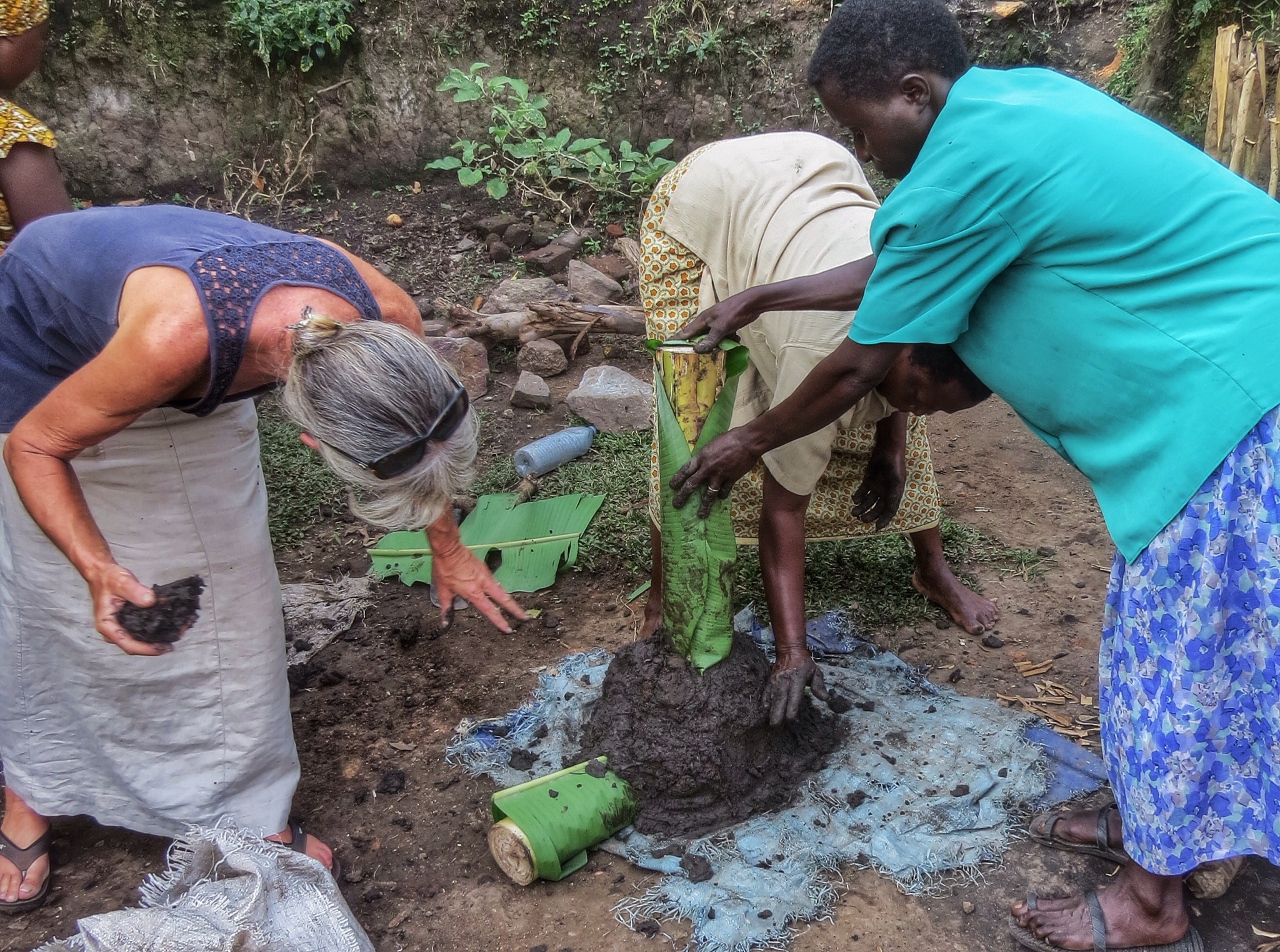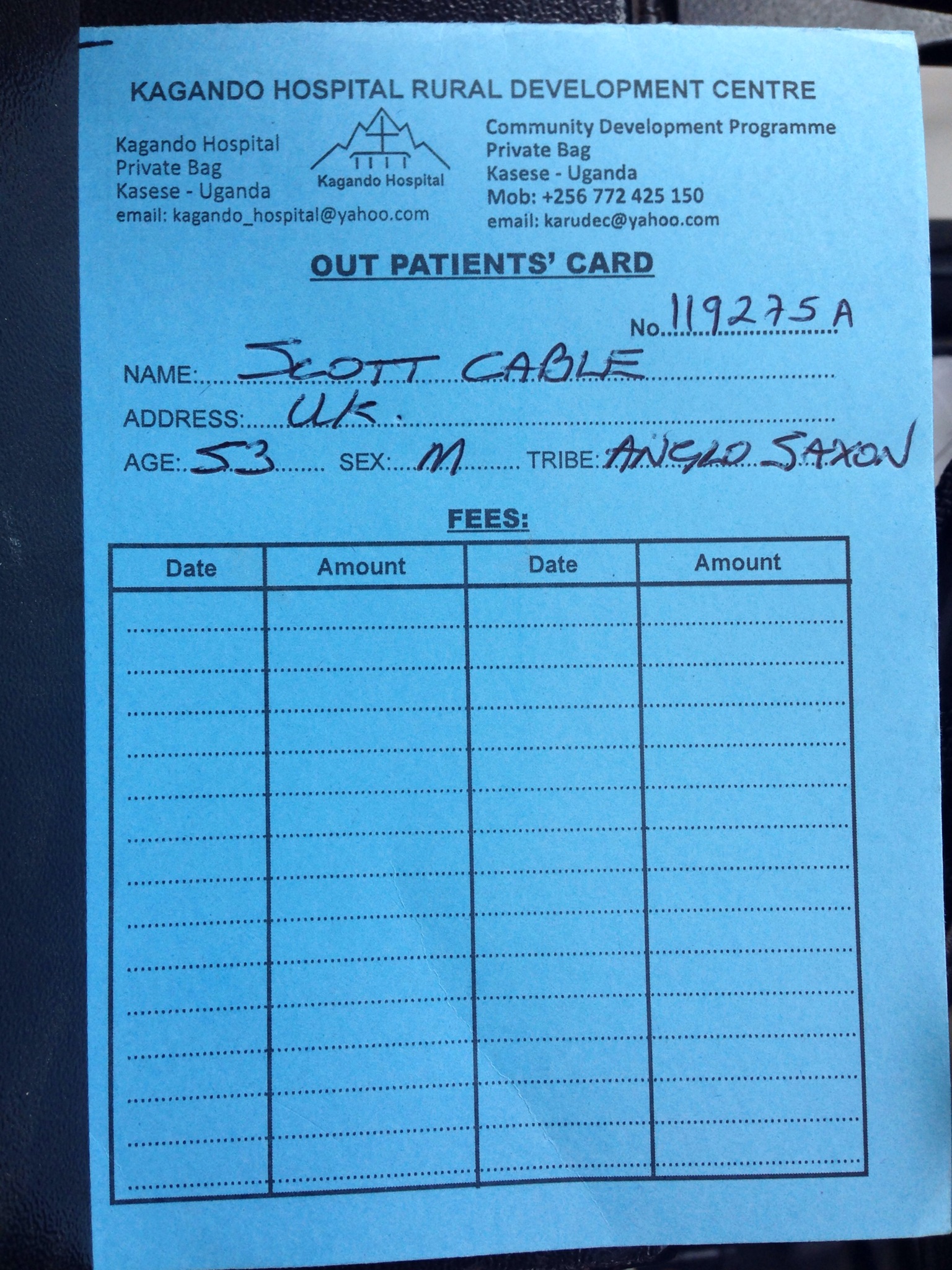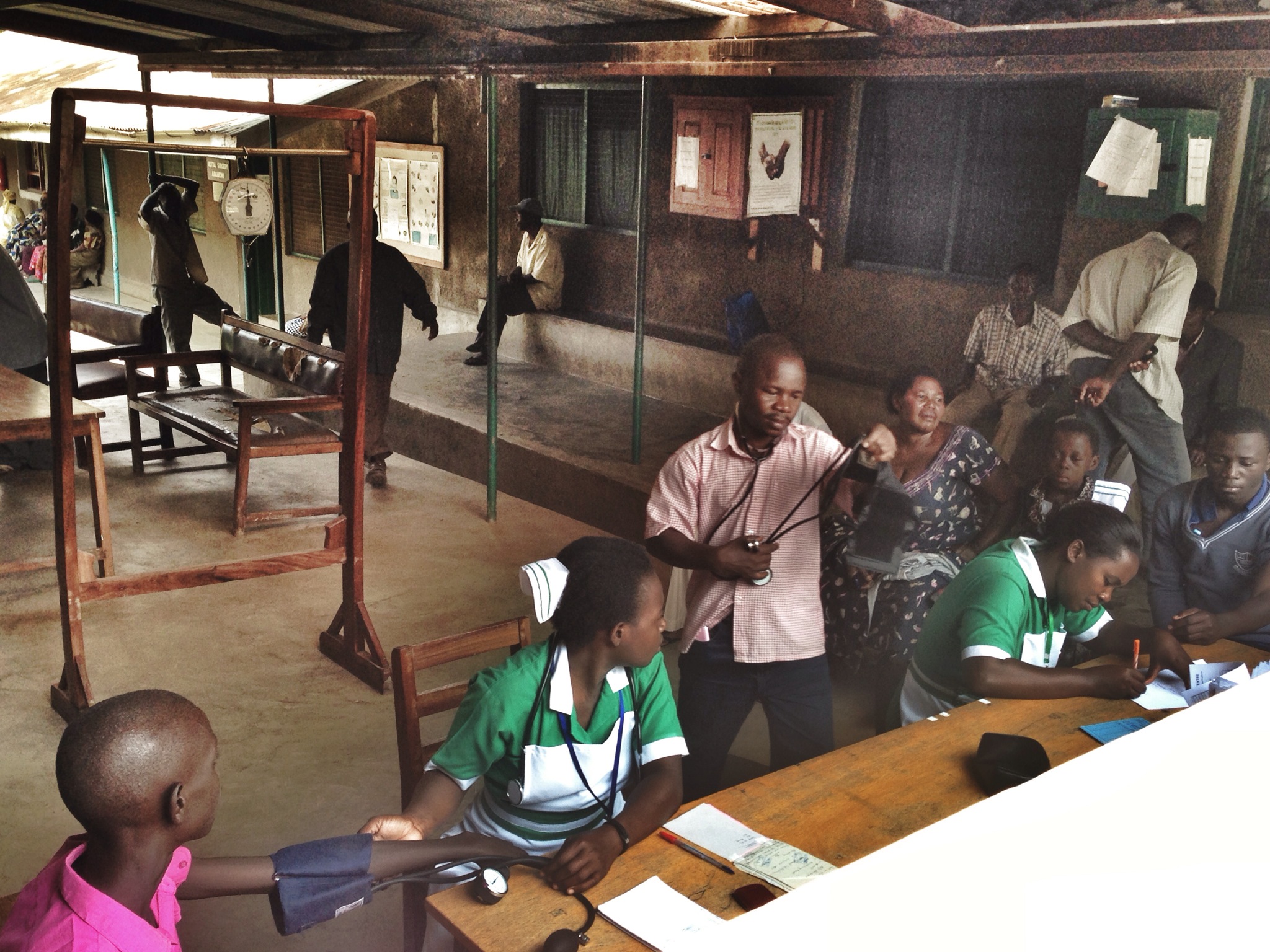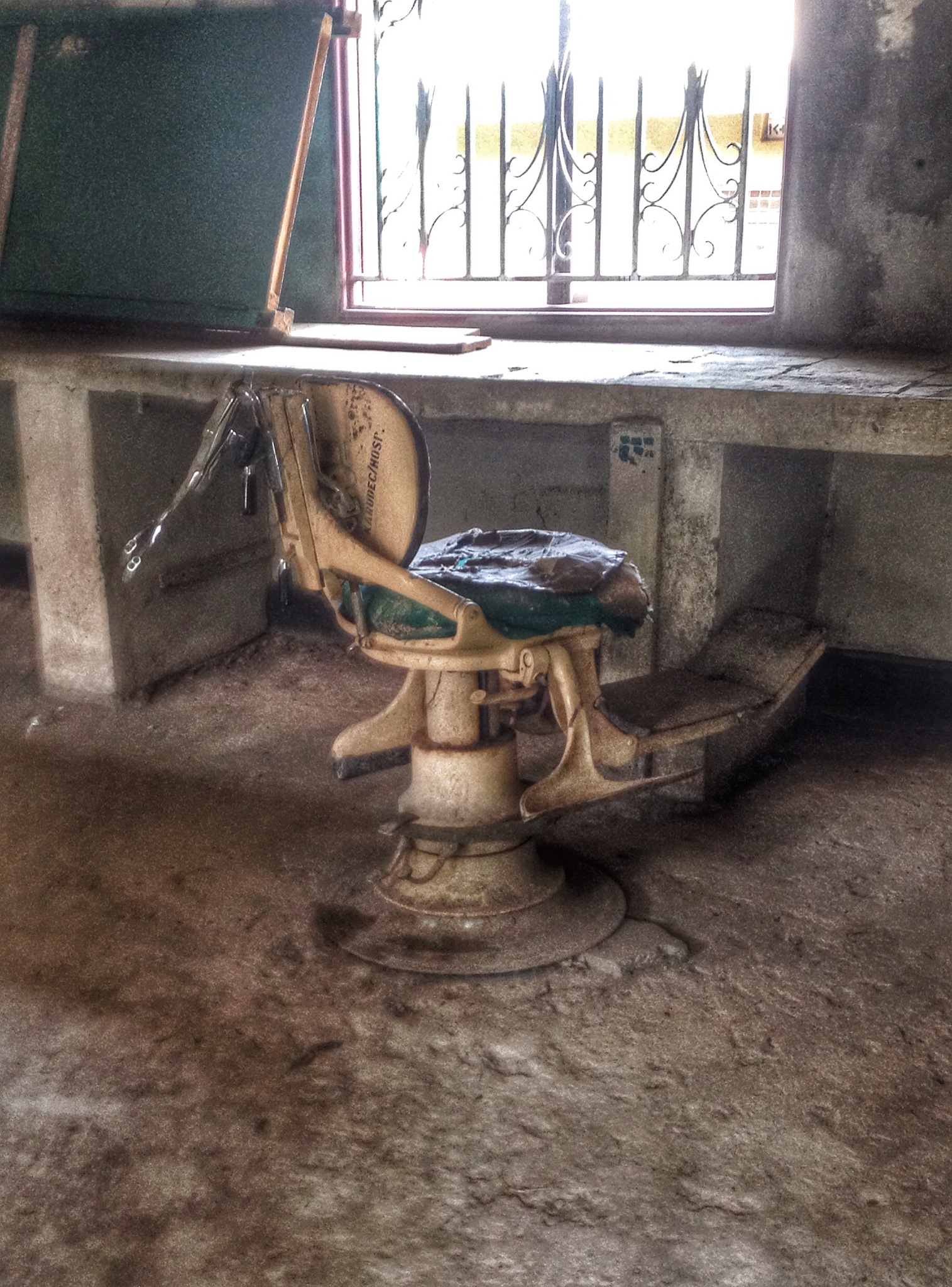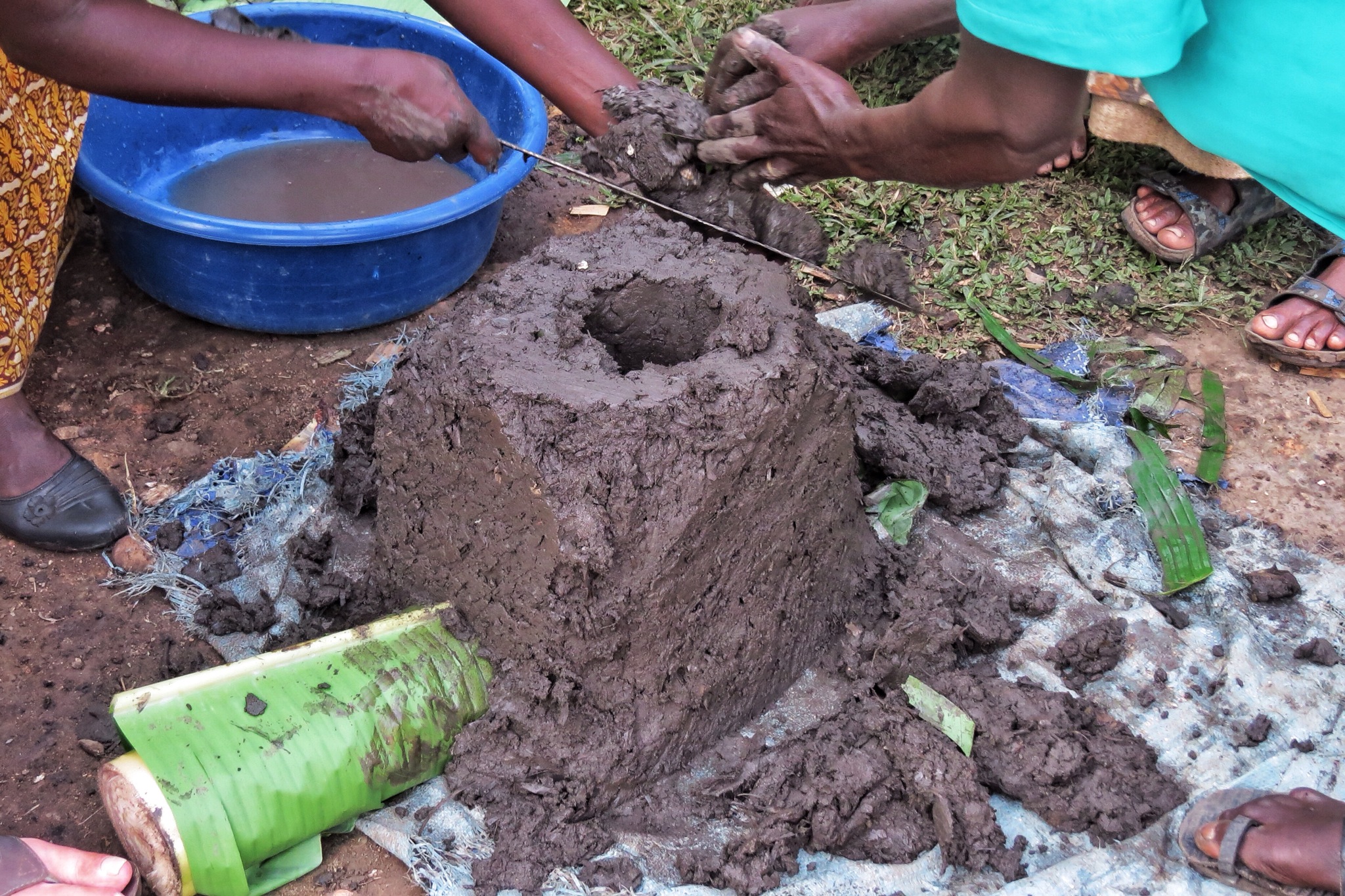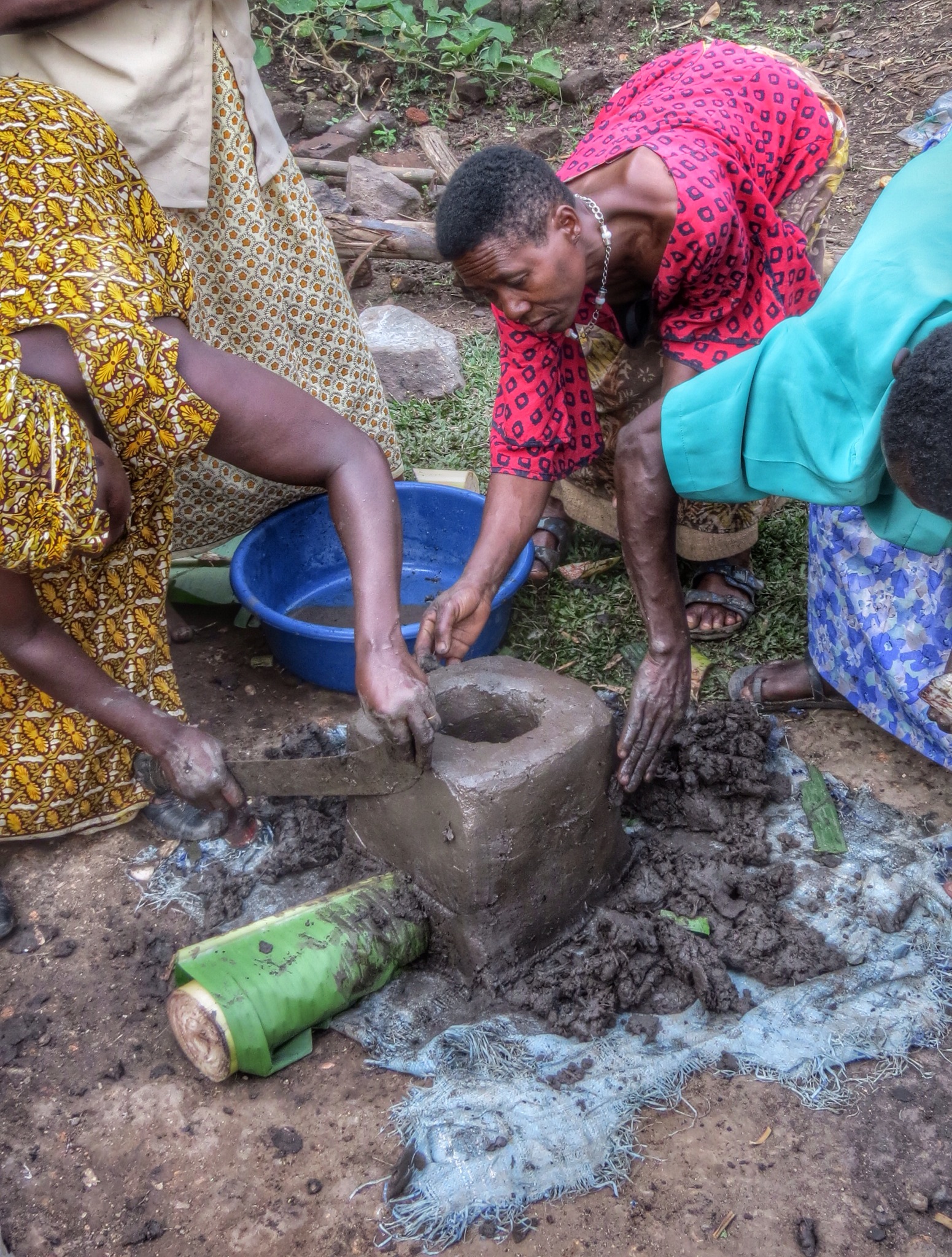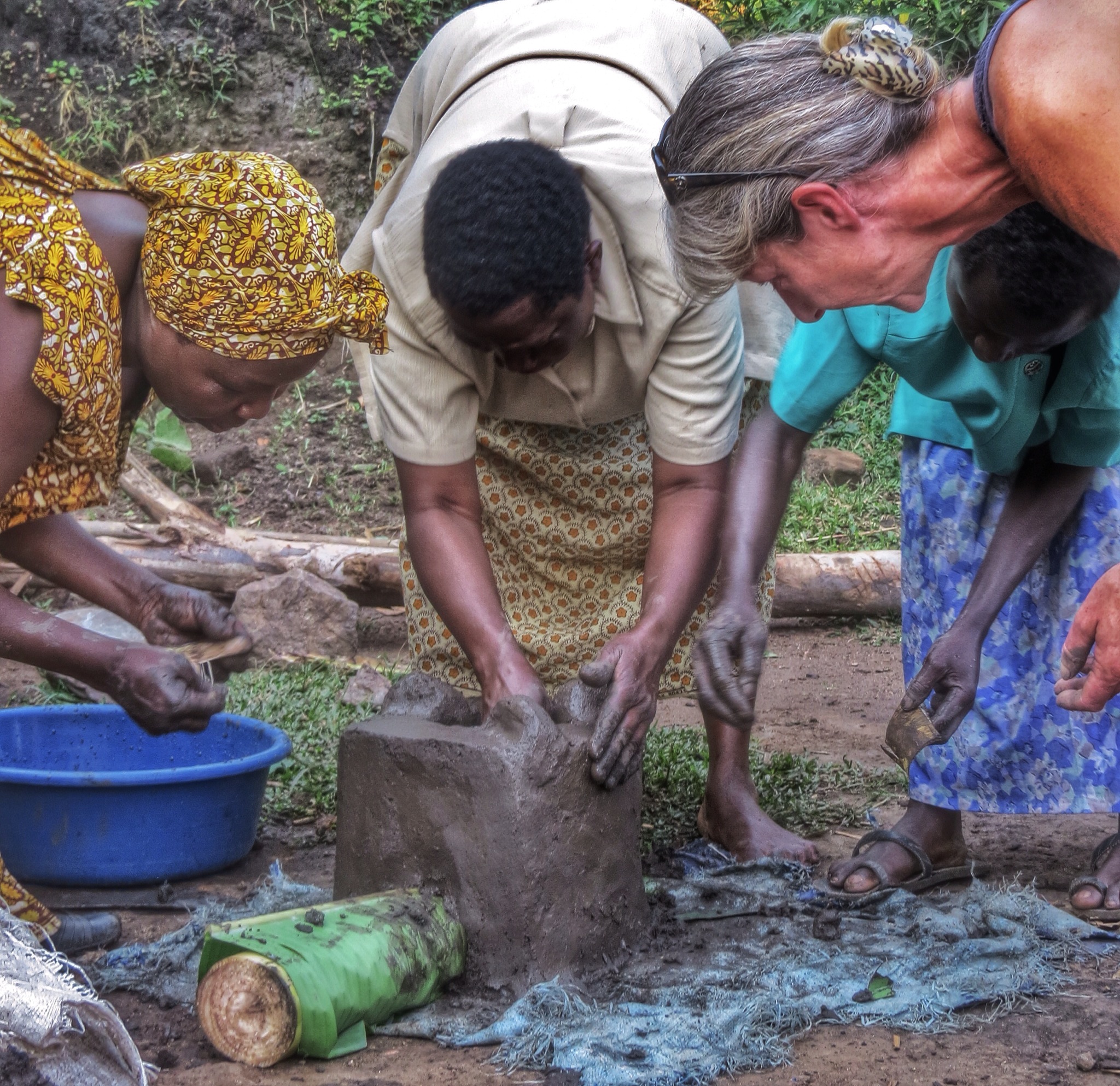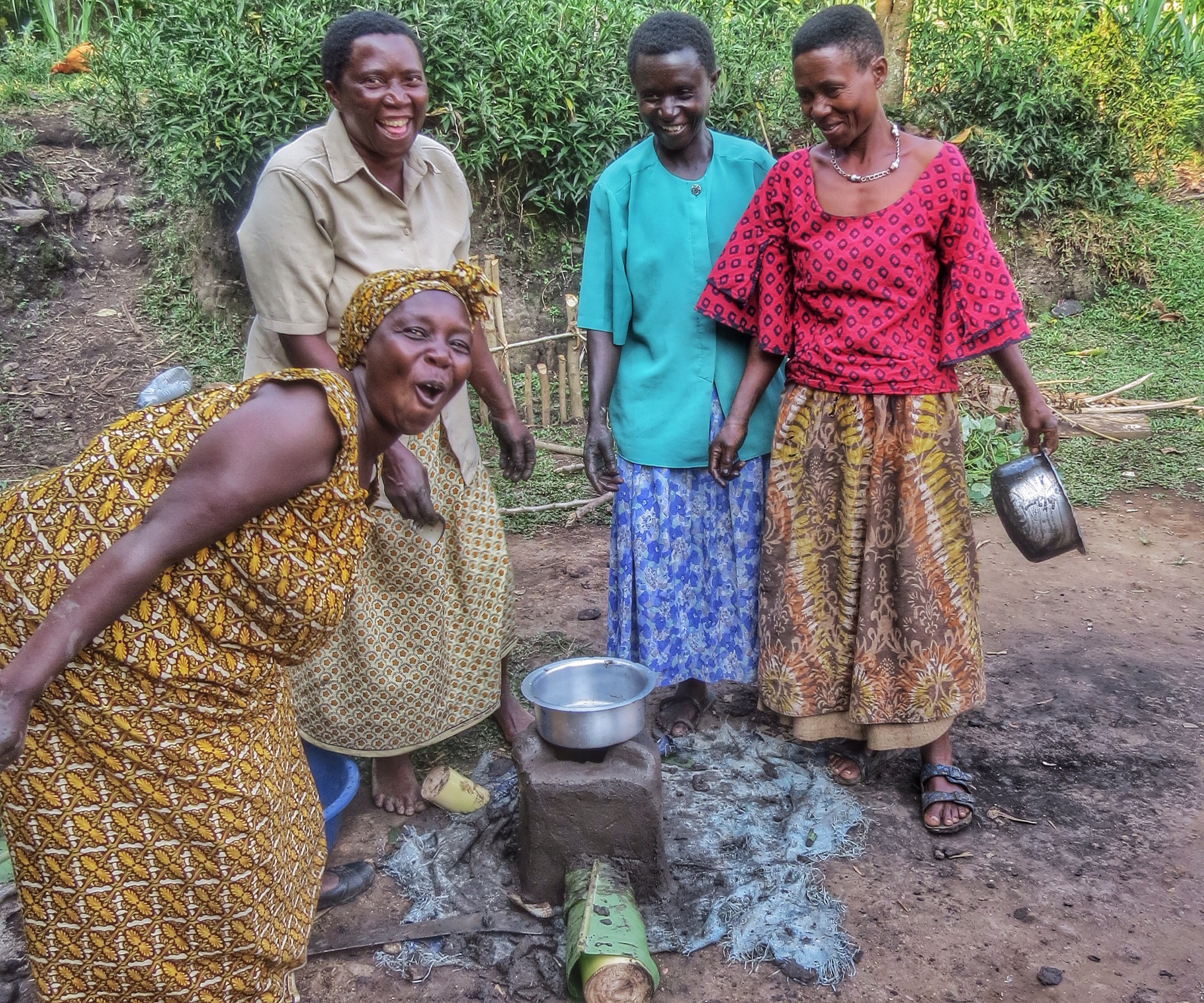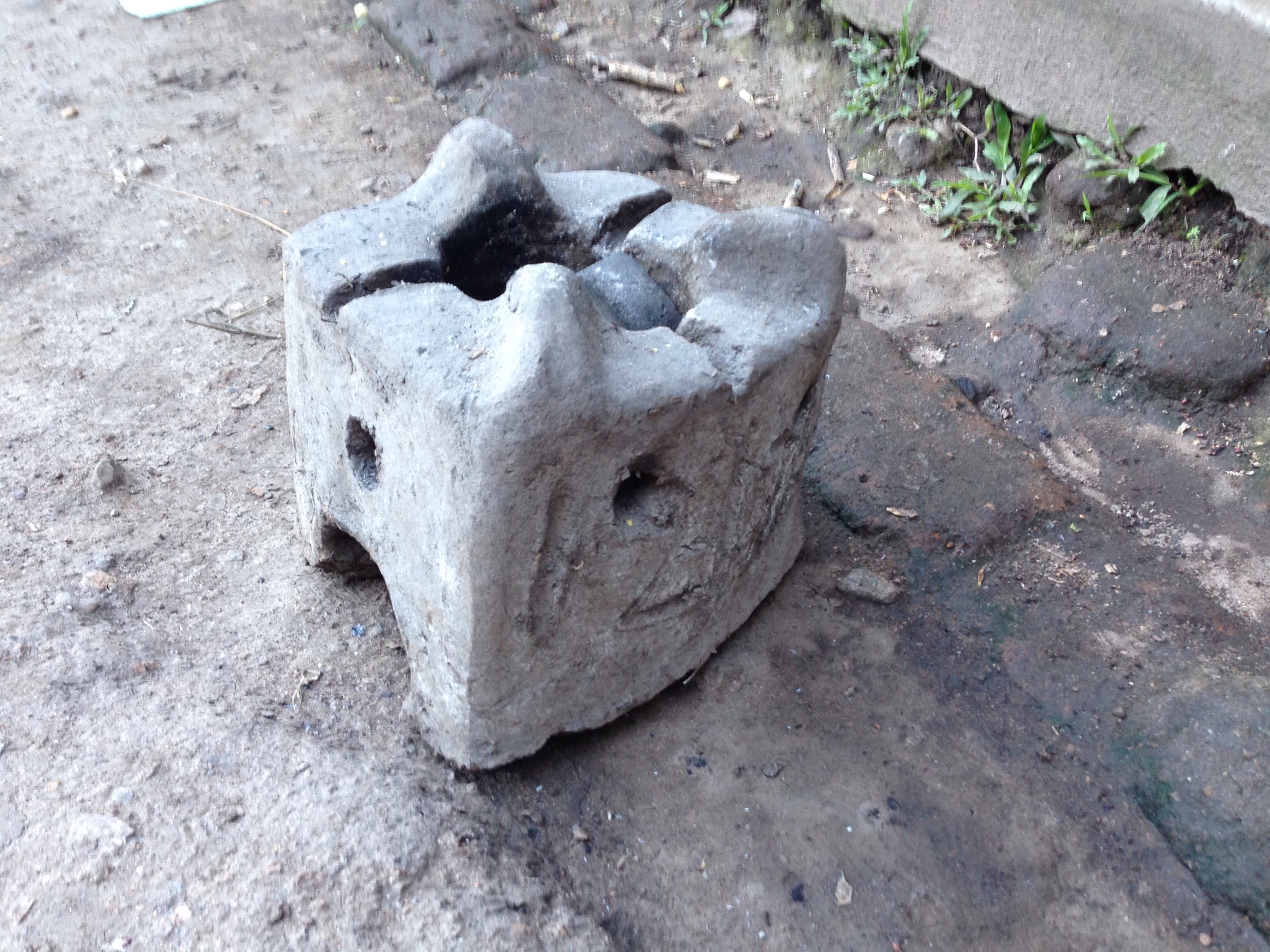There’s a difference between ‘need’ and ‘want’. Families may want a television, but they need efficient, environmentally sound, faster, cheaper, less health-damaging ways of cooking (which may take up around 6 hours of the typical day).
Women here don’t mind getting their hands dirty.
If something here needs doing, get on with it. If you need something at home and you can’t afford to buy it, find a way to make it.
So, an afternoon of learning how to make rocket-stoves was scheduled.
That meant starting with a pile of clay, mud & anthill that had been hammered together brutally over the previous 2-3 days.
The mud was mixed with a little dried grass / banana leaves to add some fibre.
Next, a mould was required. Nothing sophisticated here. A banana pole will do.
Cut the pole in 2 pieces (these girls can handle a knife!).
Then, as usually happens when a bunch of women get together, the mud-slinging starts.
Oops – did I say that out loud?
The banana pole is used as a ‘former’ to create a hole in the side of the stove through which air will be drawn into the bottom if the fire-grate. The hole from the banana pole doesn’t go all the way through the base of the fire as air is only drawn in through one narrow opening on one side.
Mud is thrown with some venom at the pole, to ensure it is well compacted.
Then, 3 short metal bars are placed on top of the bottom pole and the other half of the cut pole is stood on top of them. The metal bars will set into the mud and make the grate of the fire. The second (vertical) banana pole is used to mould the centre of the fire.
The banana leaves are wrapped round the poles to ensure the poles can be removed later without damaging the mud shape.
Time for a bit more mud-slinging girls.
Margaret (the woman in the blue skirt) is the main instructor within this team of rowdy jokers. For some years now she has been a preacher at the church in Kajwenge village. She’s a bright, articulate, friendly but fairly sober woman.
That wasn’t always the case (sober, at least). As she is happy to explain, until she became involved with the church she was one of the area’s main manufacturers of ‘moonshine’ or any other booze she could make from what she grew in her garden, and a rather well known Witch-Doctor!
Actually, digressing slightly, I had to go to the local hospital recently. Nothing to do with the spider bite – which has healed now, after about 3 months – but because I went down with a fever and shivering fits for a couple of days. No idea what it was – I went for a malaria test but that came up negative. However, I may now be the only Mzungu to be registered as a patient at Kagando hospital in the mountains. Tribal background is a major cultural and social factor here. I wasn’t sure what to enter on the form.
There are many wards at Kagando (basic, and very large) but space is at a premium. The Out-Patients Department is literally that – Out, as in ‘outside’.
That said, I think I’d rather be out in the fresh air – some of the treatment rooms have seen better days.
Amazing what some treatment actually costs. A self-test malaria kit from a pharmacy will cost about £4 ($6.50). They are notorious for giving false-positive and / or false-negative readings. The way I look at that is, if the test only gives an accurate result 90% of the time why use it!
In contrast, I spent about 2 hours at Kagando Hospital. I was interviewed, admitted as a patient, given a patient file, interviewed (no issues), had my blood-pressure taken (fine), weighed (that made them laugh), and had bloods taken for proper physical analysis by a lab technician (negative).
Total cost, £1.50 ($2.50).
Top Tip: Unless you really are somewhere extraordinarily remote, forget about self-test malaria kits. They’re next to useless and almost any village clinic / hospital will do a better job for a small fee. Also, give them a donation as a thank-you.
Anyway, back to the mud-slinging Rocket Scientists…
Once the correct amount of mud has been slung, start shaping the stove.
Then remove the top banana pole and start to level the top.
The metal bars that form the grate of the fire are at the bottom of the hole, on top of the remaining banana pole.
Smooth the outside of the fire body and the inside of the fire well.
It’s thirsty work, 30 degrees in the shade and 87% humidity.
Make three ‘sausages’ of clay and mould them into the top of the fire as a pot stand.
Continue smoothing the fire surface with a wet knife blade and leaves. Leave the bottom banana pole in place until the clay has dried, or the fire will collapse.
Test the pot stand for size. Stand back, admire your work and continue clowning around.
When the latecomers arrive, tell them how much fun you’ve had, how easy it was, and what they’ve missed.
The clay stove should be made on a hessian mat or a tarpaulin so that it can be moved. Don’t move it yet, it will break. Cover it to protect it from the weather and leave it to partially dry for 3-4 days. Then, using a stick, make a couple of holes in the side to increase the draw of the fire, lift it and put it somewhere warm to dry for a further week.
Finally, mix a small amount of paste made from Casava or potato leaves and water and rub it into the outside surfaces to seal the clay.
Your Rocket Stove is ready to use.
The girls made 2 stoves, and had a good laugh, over a 3-hour period one afternoon. There is such demand for them (they’re cleaner, quicker, safer and use 50% less fuel than traditional fires) that the women’s co-op group in Bwera had made a bunch of them and are selling them to others.
It’s been a great month working with the Amaha We Uganda team in Kasese and ‘The Mountains of The Moon’. Next, back to Entebbe to collect our pal Judith who’s joining us from the UK for 3 weeks. A chance to relax with her on the banks of The Nile and try walking with Dinosaurs.


